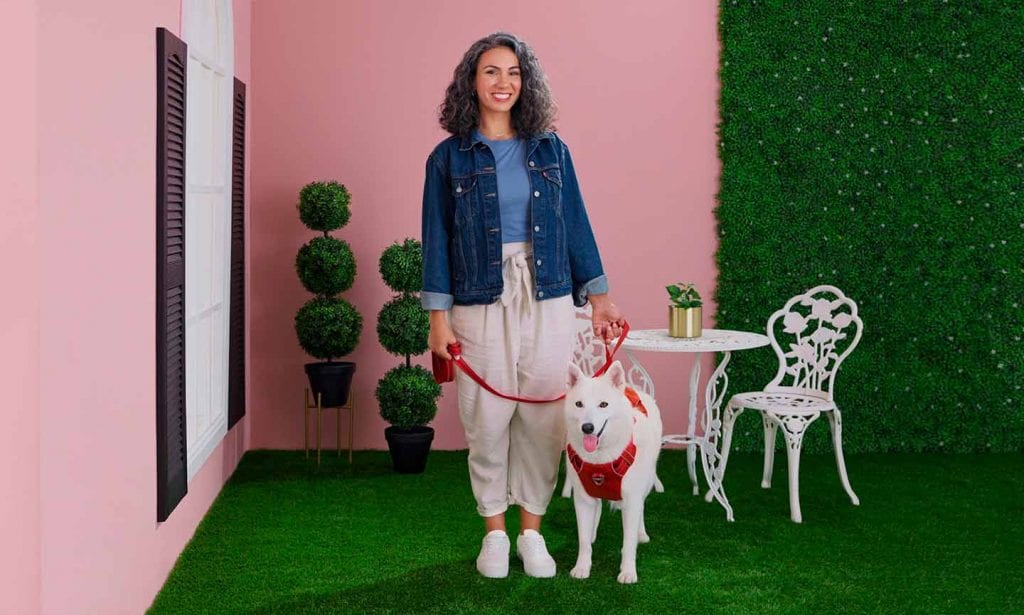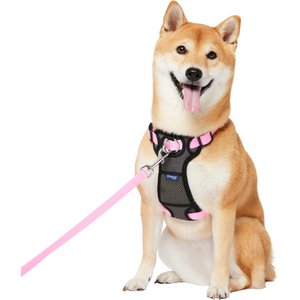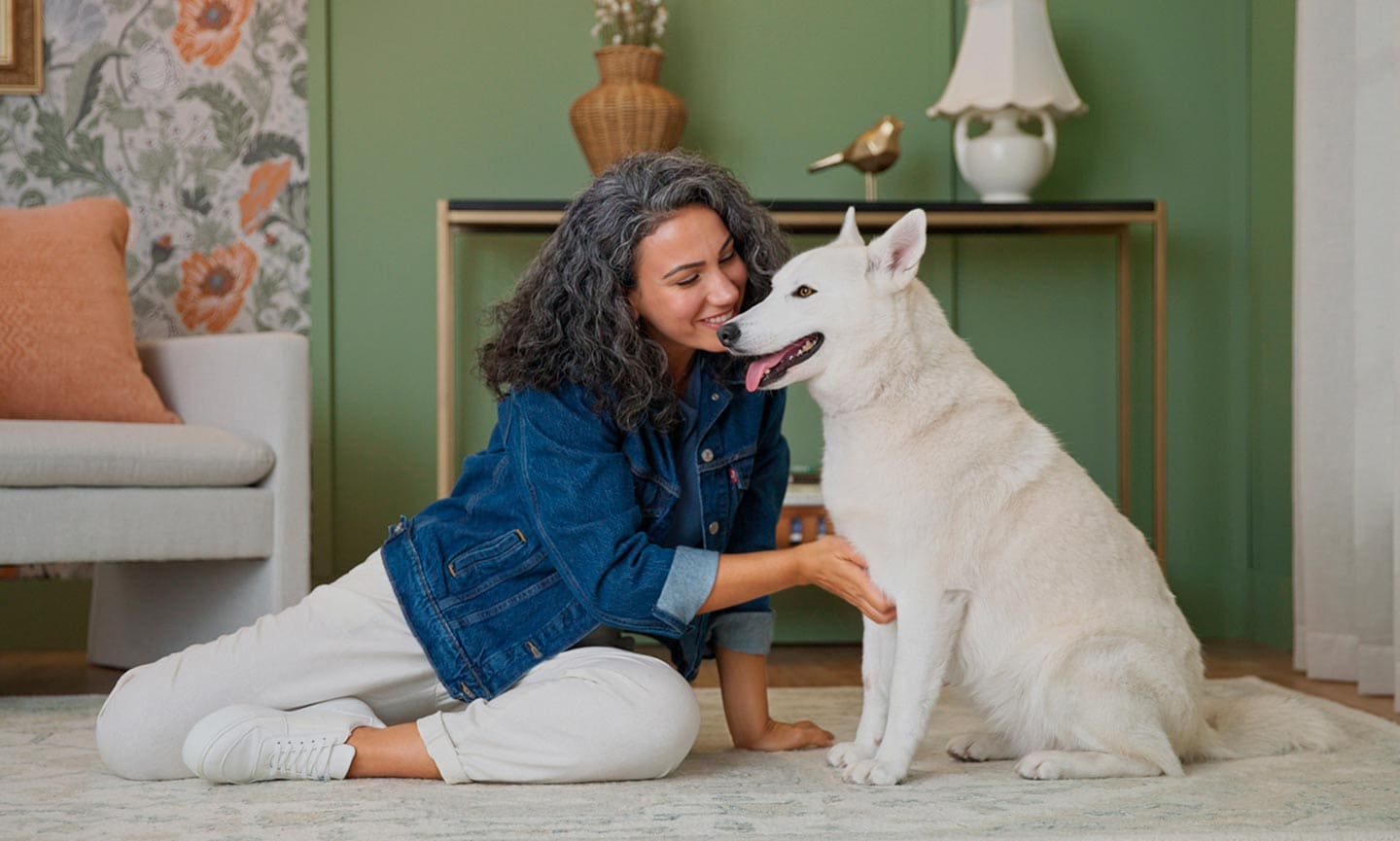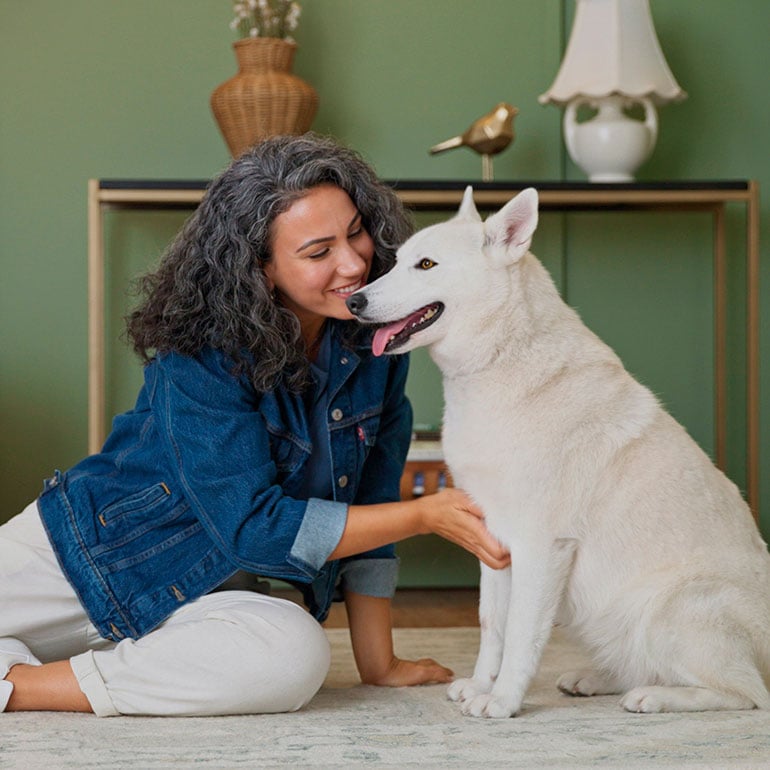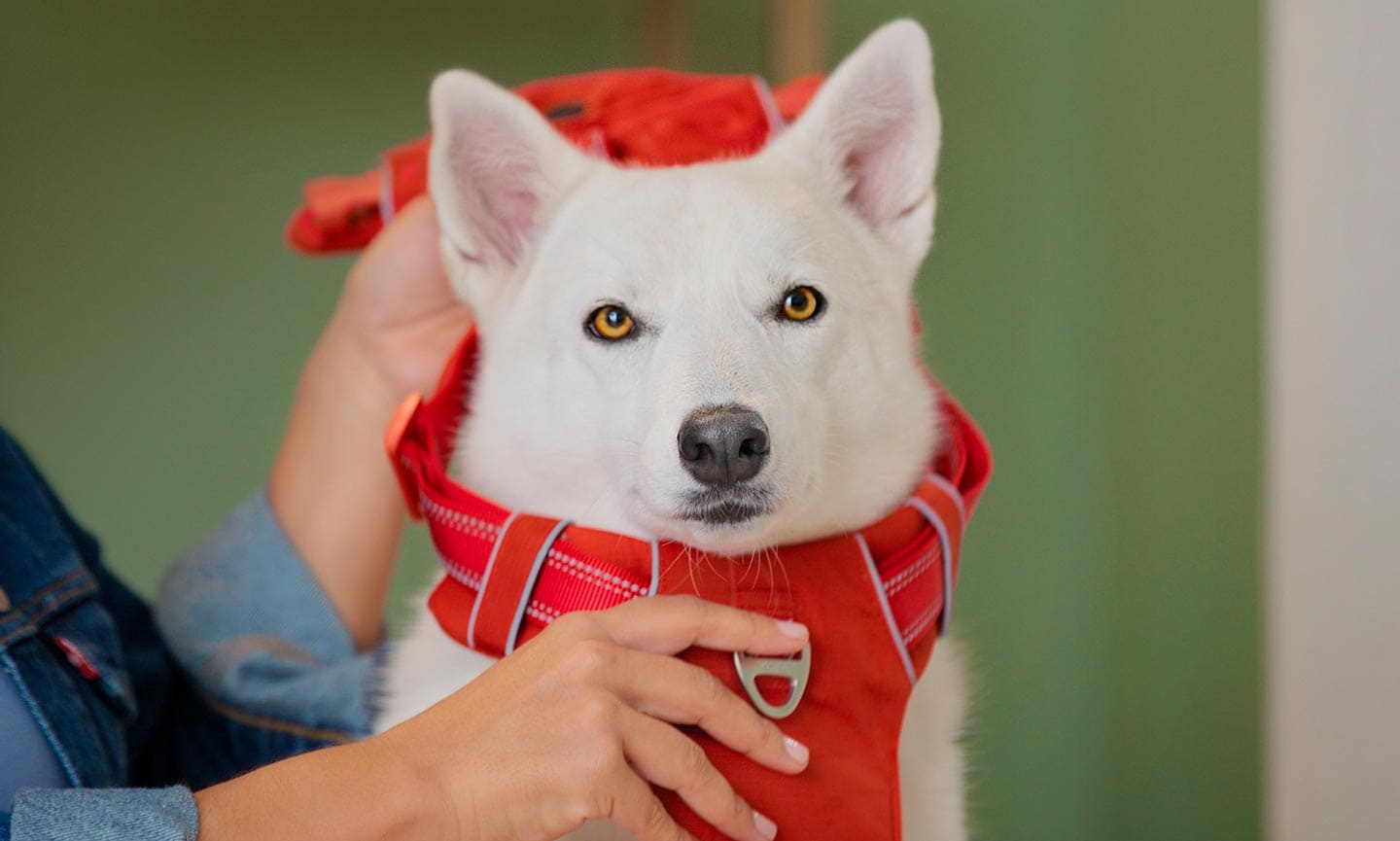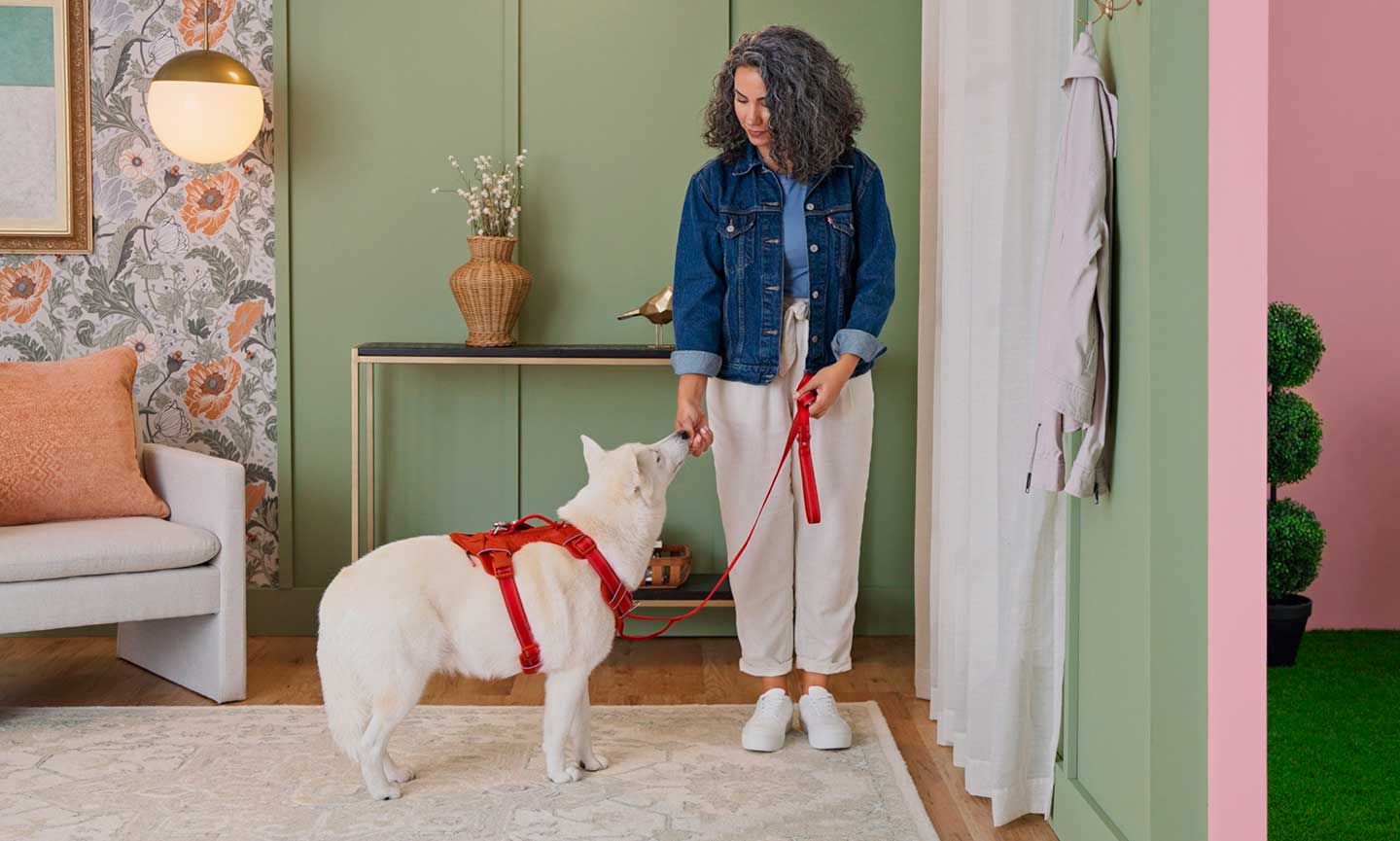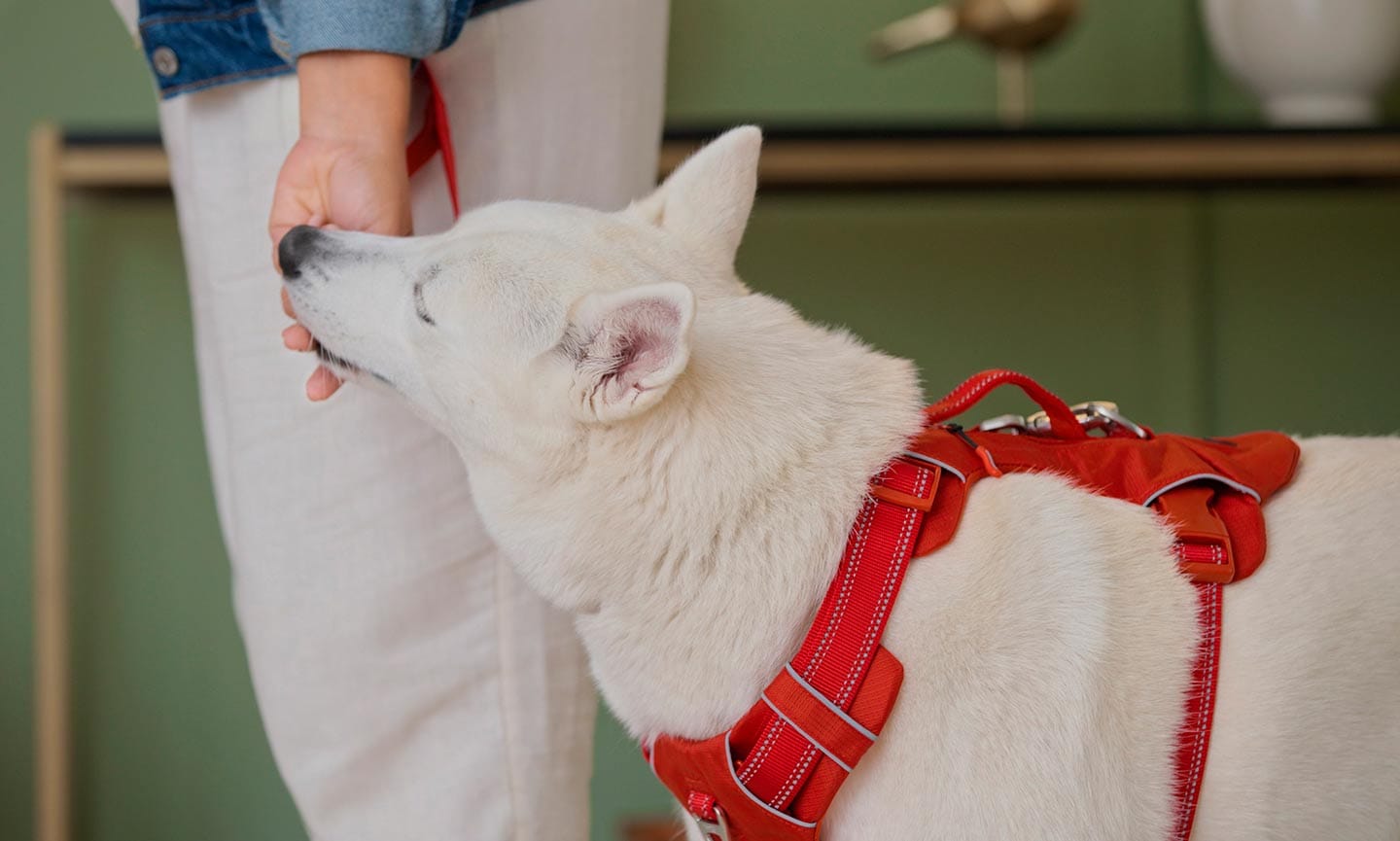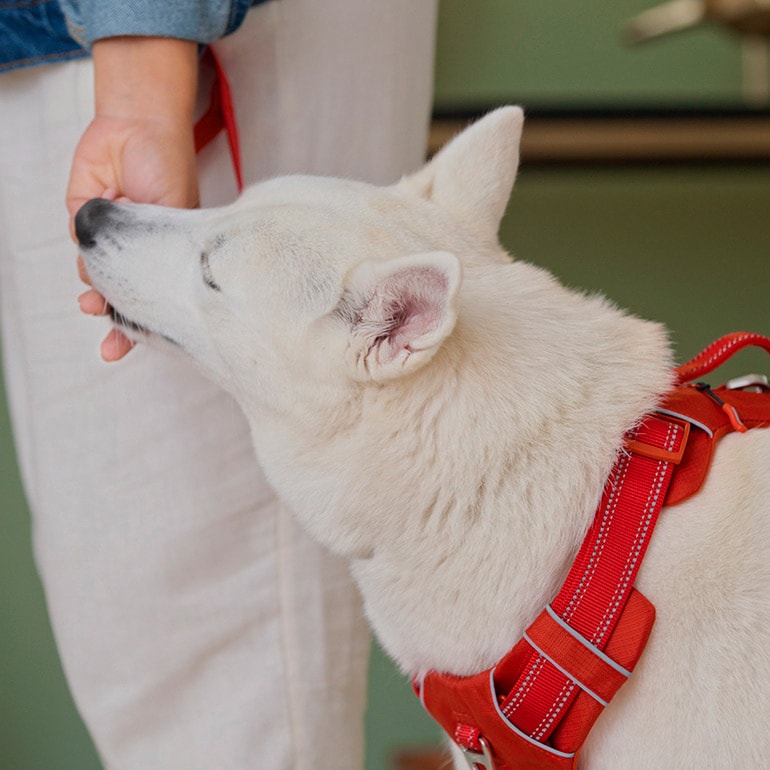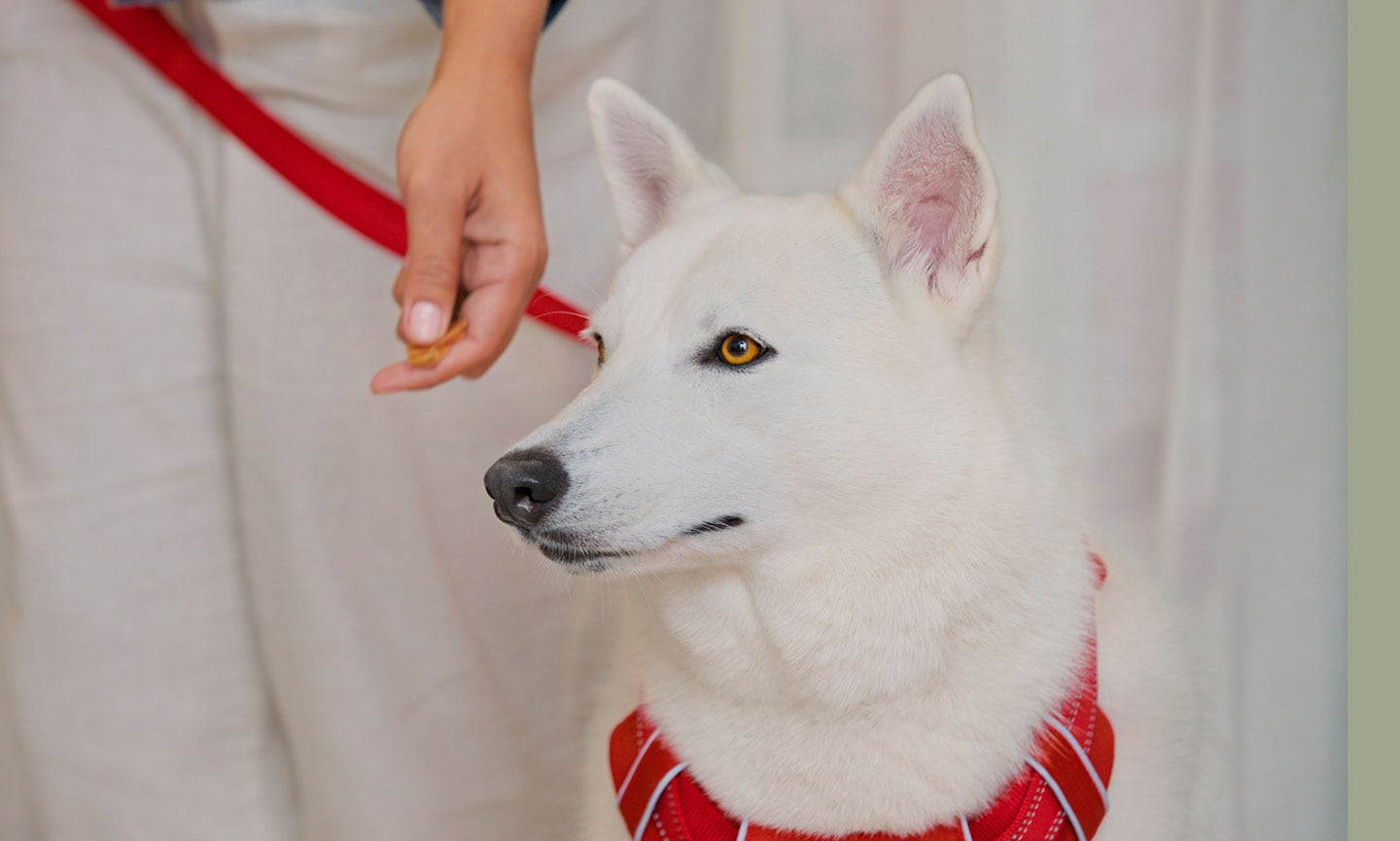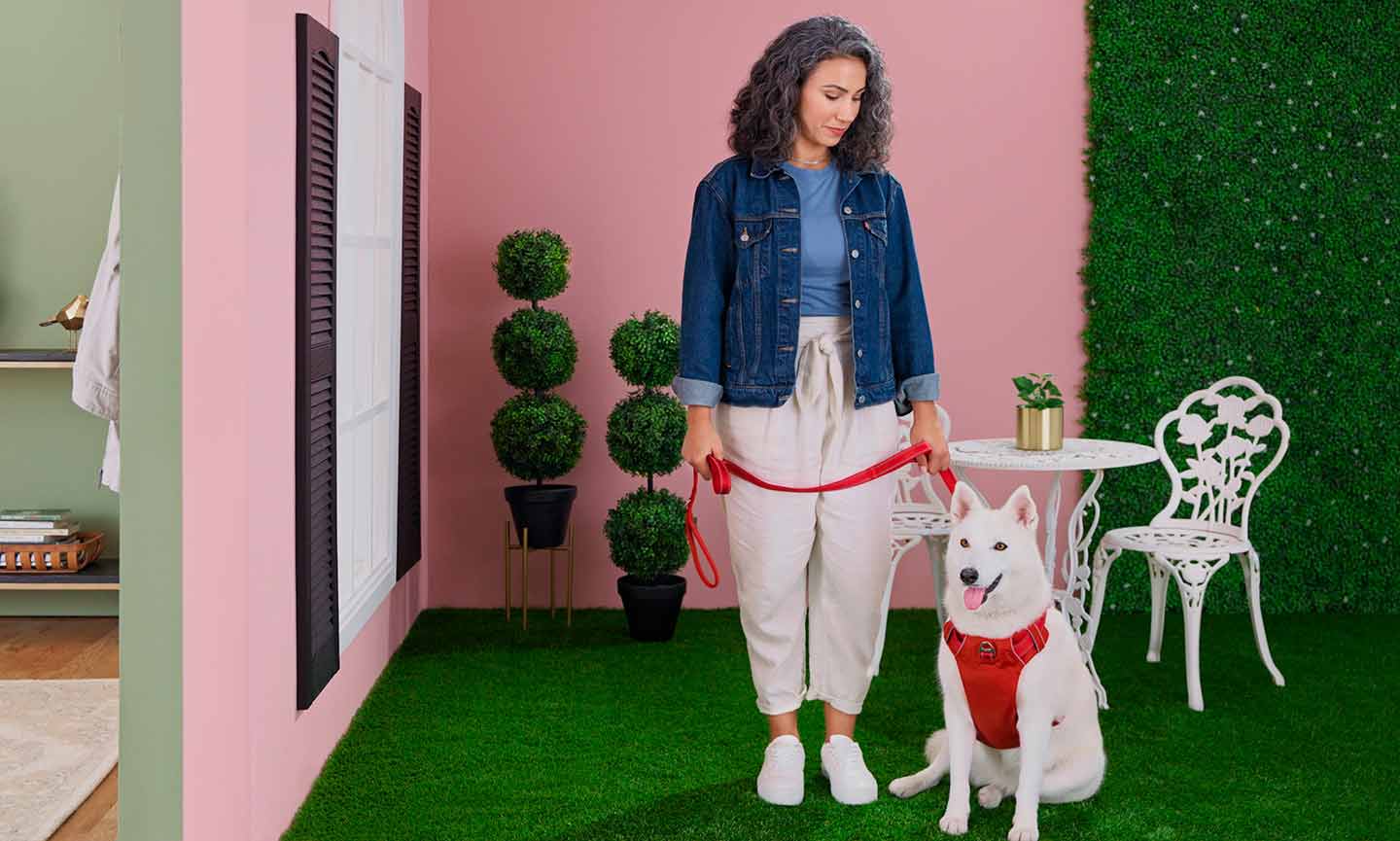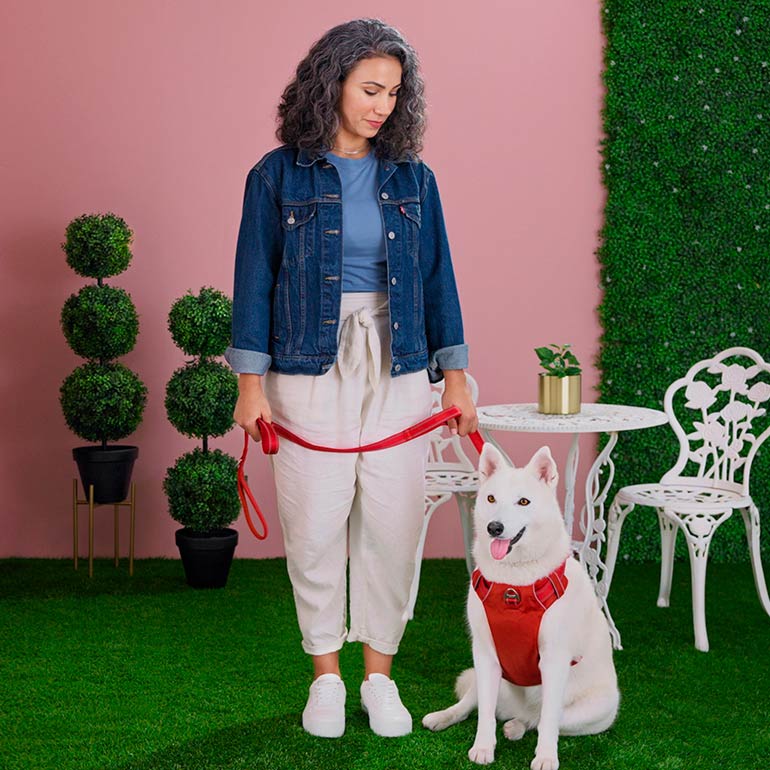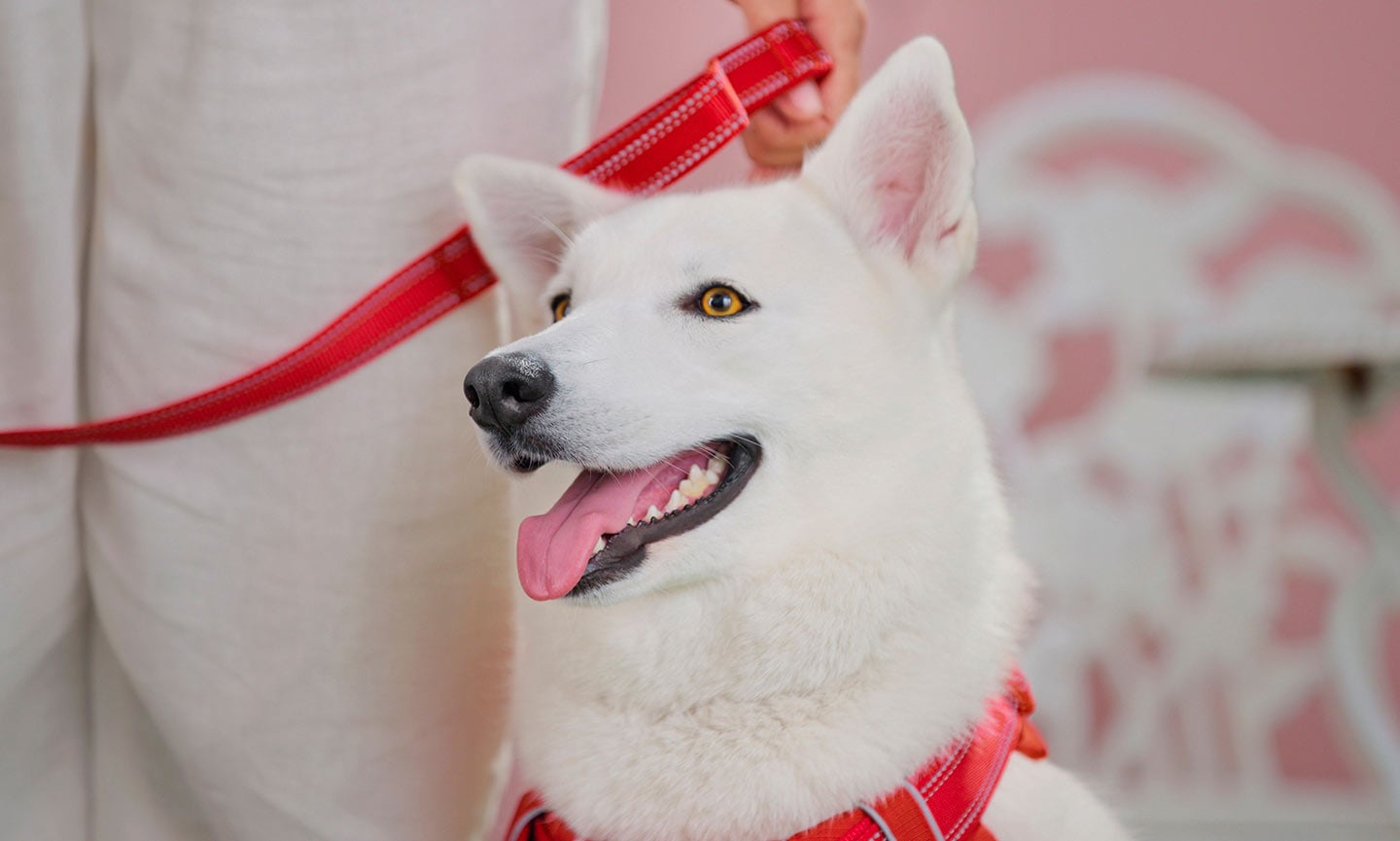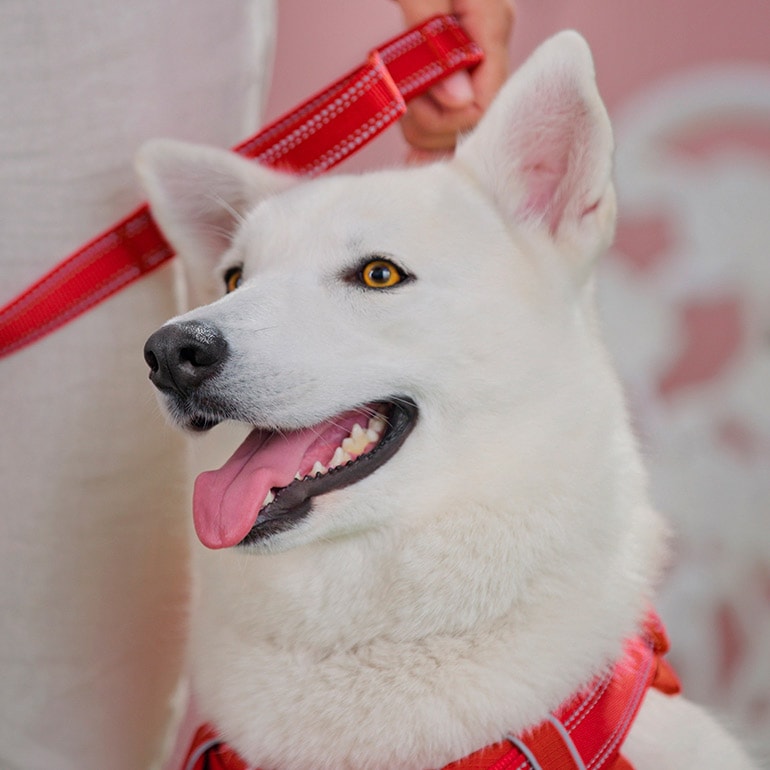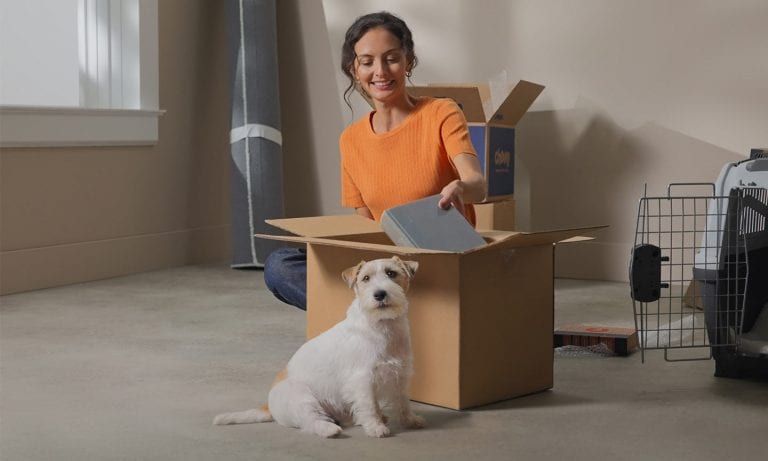Does your dog pull you down the street whenever you take them for a walk? Do they run circles around you (wrapping you in the leash in the process) or treat their leash like a tug toy? You’re not alone—walking on a leash doesn’t come naturally for many dogs. But here’s the good news: With the right training, most dogs can learn to walk politely beside you. You just have to know how to leash train a dog.
Since there are so many situations where dogs must be leashed, understanding how to leash train a dog belongs at the top of your pet parent priority list. From hiking to dining at dog-friendly restaurants to basic walks around the neighborhood, proper leash training opens up a world of fun activities for you and your pup to explore together.
Ready to get started? As a professional dog trainer, I’m here to guide you through everything you need to know about training your dog to walk on leash.
Click the buttons to jump to each section:
The Benefits of Leash Training
Leash training a dog has a variety of benefits:
- Being able to take a walk without your dog pulling: While pulling on leash may not sound so bad, repeated walks with a dog who is pulling can cause stress to your muscles and joints. In extreme cases, a dog can pull you right off your feet. Walking with a dog who behaves well on leash is much more pleasant.
- Opportunities to go here, there and everywhere: Dogs can suffer from boredom just like people. Regular outings to new places help keep your dog’s mind happily occupied. (And it breaks up the monotony of daily walks for you, too.)
- Exercise (for you and your dog): Like us, dogs get cardiovascular benefits from walking. Movement is good for your dog’s body! And since walking with a dog who has good leash manners is fun, you’ll probably get more walking in yourself. It’s a win-win!
- Outdoor time (for you and your dog): There are lots benefits to being outdoors. You get a break from staring at your computer while your pooch gets a break from staring at the walls, and you both get fresh air and a change of pace. Both you and your dog are likely to feel refreshed and happy after walking outside.
All of these benefits depend on training your dog to walk on leash properly. That means now’s the time to get started!
Supplies for Leash Training a Dog
Before starting to leash train a puppy or adult dog, gather everything your dog needs for success:
- Training treats to use as rewards
- A quality 6-foot leash that feels good in your hand (avoid using a retractable leash, which can be confusing for some dogs due to its constant pulling effect)
- Dog poop bags and a poop bag holder
- A well-fitted dog harness
Why Do I Need a Dog Harness?
If you’re like most dog parents, a collar was probably one of the first purchases you made for your furry friend. So why should you use a dog harness rather than simply clipping their leash to their collar for walks?
The answer: Harnesses are gentler on your dog’s neck. The pressure of a leash being yanked on a collar can cause physical harm to your dog—and that’s true no matter whether you or your dog is doing the pulling. Using a harness distributes leash pressure more evenly across the dog’s body, so it’s less likely to cause injury.
If your dog is prone to pulling, I recommend a front-clip harness. That’s because when the leash is attached to the front of your dog’s chest, the force of their pulling will turn them to the side, which makes it more difficult for them to dig in and pull with their full force. Some harnesses, such as the Freedom Harness, come with both types of clips, so you can choose which clip to use.
How to Leash Train a Dog: Step-by-Step Instructions
1 Start in a small, quiet space indoors.
2 Introduce the harness and leash—with treats!
3 Take a small step in any direction.
4 Practice moving in different directions.
When your dog has mastered following you in one direction, it’s time to switch things up. Keep moving around the room in different directions, feeding treats every time your dog follows your lead. For example, if you began by stepping forward, try stepping backward or to the side—all the ways you might move while on a walk. Treat your dog every time they move along with you.
Practice this for around 10-15 minutes per day until your pup consistently follows you.
5 Start feeding treats only on one side.
6Begin to vary how often you feed the treats.
7Find new places to practice.
When your dog has mastered leash walking in a small room, practice dog walking in other areas. A hallway is a great environment to try next, because the narrowness of a hallway helps keep your dog near you as you practice. Go back to feeding one treat per step when you start in a new area, though, since it will be a little harder for your dog. Then gradually reduce the frequency of treats as you did before.
Eventually, you can practice walking in a larger room, walking all around your home and even in your backyard. In each new place, begin with small steps and frequent treats, and gradually work up to larger steps and fewer treats.
8Take a walk out in the world!
Leash Training Troubleshooting
Try these training tips to curb common behaviors while on leash:
Pulling
If your dog continues pulling, you may be feeding too few treats, the treats may not be tasty (aka high value) enough, or the situation may be beyond your dog’s level of training. Feed more often, use super-delicious treats, or take your dog to an easier location.
Lunging or Chasing Things
If your dog lunges or starts chasing something, stop walking and hold steady. Instead of yanking on the leash, call your dog’s name in a cheerful tone, making kissy noises, or stamping your feet. Once you have your dog’s attention, praise, hand them a treat, and then walk away, feeding treats with each step, until your dog calms down.
If you can’t get your dog’s attention, you’ll have to gently pull them away. This is the “least bad” solution. In a perfect world, your dog will come with you on a verbal cue (like “come”), but hey, life isn’t always perfect. If you do have to pull them away, do not jerk the leash. Instead, anchor your leash hand against your belly button and calmly walk away with the leash held firmly at your abdomen, creating steady but gentle pressure on your dog as you go. Direct your gaze, shoulders and hips in the direction you’re walking—to your dog, this implies that you’re walking toward something, which just might spark their curiosity and inspire them to join you!
Biting or Playing With the Leash
If your dog keeps turning around to bite or play with the leash, remember this No. 1 rule: Never pull the leash away from the dog! It might seem counterintuitive, but pulling back on a leash your dog is playing with just makes the leash an awesome tug toy. A loose leash is far less fun for your pup.
Instead, move the leash gently toward your dog so all tension is released and they can’t get that satisfying tug feeling. If necessary, use two leashes on walks, so that if your dog grabs one, you can let it fall to the ground while keeping your grip on the other leash.
Once your dog has dropped the leash, start walking, praising and rapid-fire treating. Most dogs decide pretty quickly that walking with you is way more fun than tugging on the leash.
Leash Training FAQs
Q:At what age should I start leash training a puppy?
A:You can start puppy leash training as soon as they come home, which is typically around 8 weeks. Just remember to keep things low-key. Work indoors, in the smallest room possible, and for puppies around 8 weeks, work for no longer than a minute at a time before taking off the leash. As your puppy grows up, you can increase the duration of your sessions.
Q:How do I train a dog to walk beside me?
A:To train a dog to walk beside you, practice tiny steps on leash in a small, quiet space and treat them whenever they move along with you. Gradually work up to different areas of your home, larger steps and fewer treats, until they eventually learn to walk beside you while on leash.
Q:How do I teach my dog not to pull on their leash?
A:To teach your dog not to pull on their leash, start by practicing tiny steps in a small, quiet space and treat them whenever they move along with you (rather than pulling on the leash). It’s also a good idea to use a harness with a front clip to deter them from pulling.
Everything You Need for Your New Dog
Share:
